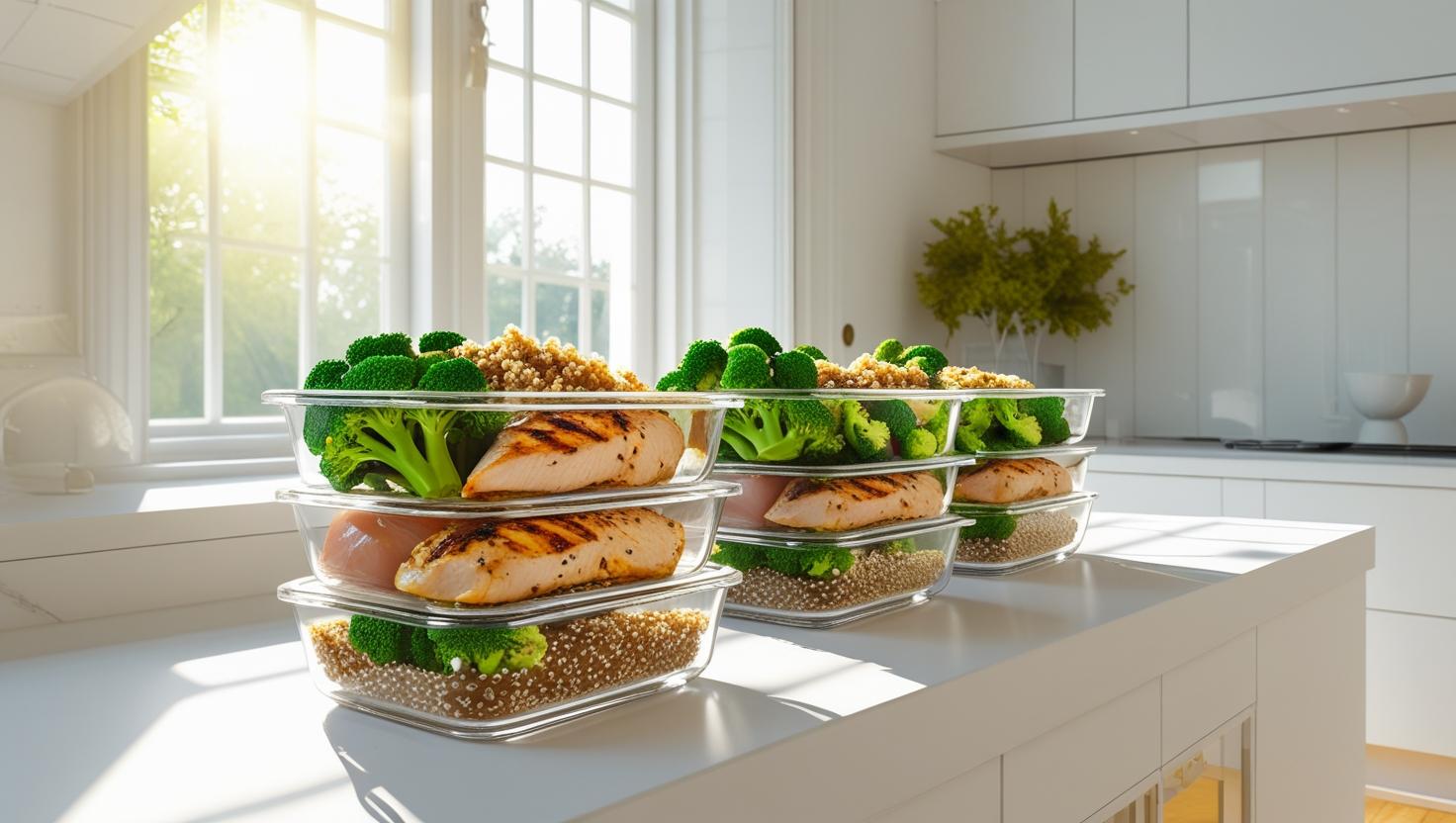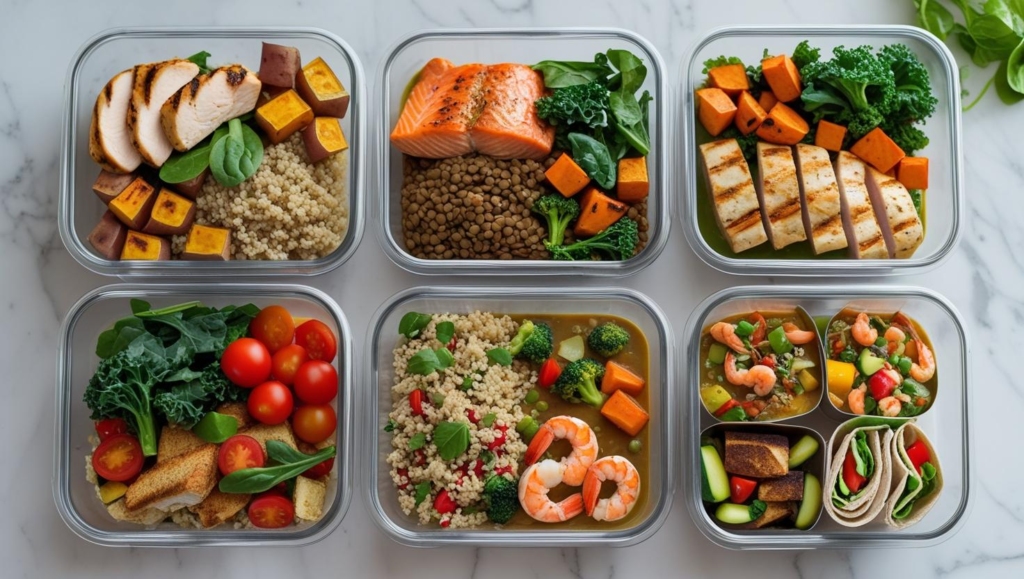33Views 0Comments

How to Create a Sustainable Weight Loss Meal Plan
Losing weight isn’t about following the latest fad diet or starving yourself—it’s about creating sustainable habits that you can maintain for the long term. The key to weight loss success is not just what you eat, but how you approach food. A sustainable weight loss meal plan should nourish your body, fuel your workouts, and most importantly, fit into your lifestyle without feeling restrictive. Let’s dive into how you can create a meal plan that works for you, helps you lose weight, and keeps you feeling satisfied.
1. Focus on Whole Foods
When it comes to weight loss, whole foods should be the foundation of your meal plan. These are foods that are minimally processed and packed with nutrients, like fruits, vegetables, whole grains, lean proteins, and healthy fats. Whole foods are not only good for your body but also help keep you feeling fuller longer because they’re rich in fiber and protein. Incorporating a variety of whole foods into your meals will ensure you get all the vitamins and minerals your body needs to stay energized throughout the day.
Examples of Whole Foods:
- Fruits and Vegetables: Leafy greens, berries, apples, carrots, and bell peppers.
- Whole Grains: Brown rice, quinoa, oats, and whole-wheat bread.
- Lean Proteins: Chicken breast, turkey, tofu, fish, and legumes.
- Healthy Fats: Avocados, olive oil, nuts, and seeds.
2. Control Portion Sizes Without Starving Yourself
A common mistake many people make when trying to lose weight is severely restricting their portion sizes. While portion control is important, it’s also crucial that you don’t deprive yourself. Restricting calories too much can leave you feeling hungry, irritable, and more likely to overeat later. The goal should be to create a calorie deficit in a sustainable way by eating the right portions of nutritious foods that fill you up and keep you satisfied.
How to Control Portion Sizes:
- Use smaller plates: Studies show that eating from smaller plates can help reduce the amount of food you eat.
- Listen to your hunger cues: Eat until you’re satisfied, not stuffed.
- Measure portions: If you’re unsure of your portion sizes, use measuring cups or a food scale to help guide you.
3. Prioritize Protein in Every Meal
Protein is an essential nutrient for weight loss because it helps build muscle, keep you full, and boost your metabolism. When you eat protein-rich foods, your body burns more calories during digestion, which can support your weight loss efforts. Plus, protein helps prevent muscle loss during weight loss, ensuring that the weight you lose comes primarily from fat.
Protein-Rich Foods to Include:
- Lean meats: Chicken breast, turkey, lean beef.
- Fish and seafood: Salmon, tuna, shrimp.
- Plant-based protein: Tofu, lentils, chickpeas, quinoa.
- Eggs: A complete protein that’s easy to incorporate into meals.
4. Incorporate Healthy Fats
Don’t shy away from healthy fats—they’re essential for hormone regulation, nutrient absorption, and satiety. Healthy fats also help slow down digestion, which means they keep you feeling full for longer periods. Just make sure to focus on unsaturated fats, such as those found in avocados, nuts, seeds, and olive oil. Avoid trans fats and limit saturated fats, which can contribute to weight gain and negatively affect your health.
Healthy Fat Sources:
- Avocados: Full of heart-healthy fats and fiber.
- Nuts and seeds: Almonds, chia seeds, flaxseeds, and walnuts.
- Olive oil: Use it as a dressing or for cooking.
- Fatty fish: Salmon, sardines, and mackerel provide omega-3 fatty acids.
5. Plan Your Meals and Snacks Ahead of Time
Meal planning and prepping are essential for creating a sustainable weight loss plan. When you plan your meals in advance, you take the guesswork out of what you’ll eat, making it easier to stay on track with your goals. This also helps you avoid impulsive food choices that are often unhealthy.
Meal Planning Tips:
- Plan your meals for the week: Choose a variety of breakfast, lunch, and dinner options that fit your calorie goals.
- Prepare snacks: Portion out healthy snacks like nuts, fruit, or veggies to prevent mindless munching throughout the day.
- Cook in batches: Make large portions of meals like soups, stews, or casseroles that can be divided into multiple servings for the week.

6. Stay Hydrated
It’s easy to overlook hydration, but drinking enough water is crucial for weight loss. Sometimes, thirst can be mistaken for hunger, leading you to eat when your body just needs water. Drinking plenty of water also helps with digestion, detoxification, and can keep your metabolism running smoothly.
Hydration Tips:
- Drink water before meals: It can help you feel fuller and prevent overeating.
- Carry a water bottle: Keep water with you throughout the day to remind yourself to drink.
- Infuse your water: Add fresh fruits or herbs like lemon, mint, or cucumber for flavor without extra calories.
7. Allow for Flexibility
A sustainable weight loss meal plan isn’t about rigid rules—it’s about balance. Allow yourself the freedom to enjoy your favorite foods in moderation, whether it’s a piece of chocolate, a slice of pizza, or a glass of wine. It’s important not to feel deprived, as this can lead to binge eating or burnout. The key is to find balance between healthy meals and occasional indulgences.
How to Stay Flexible:
- Practice moderation: Have your favorite foods in smaller portions to satisfy cravings without overindulging.
- Don’t label foods as “good” or “bad”: This can create guilt around eating. Instead, focus on eating a balanced diet overall.
- Eat intuitively: Listen to your body and eat when you’re hungry, stopping when you’re full.